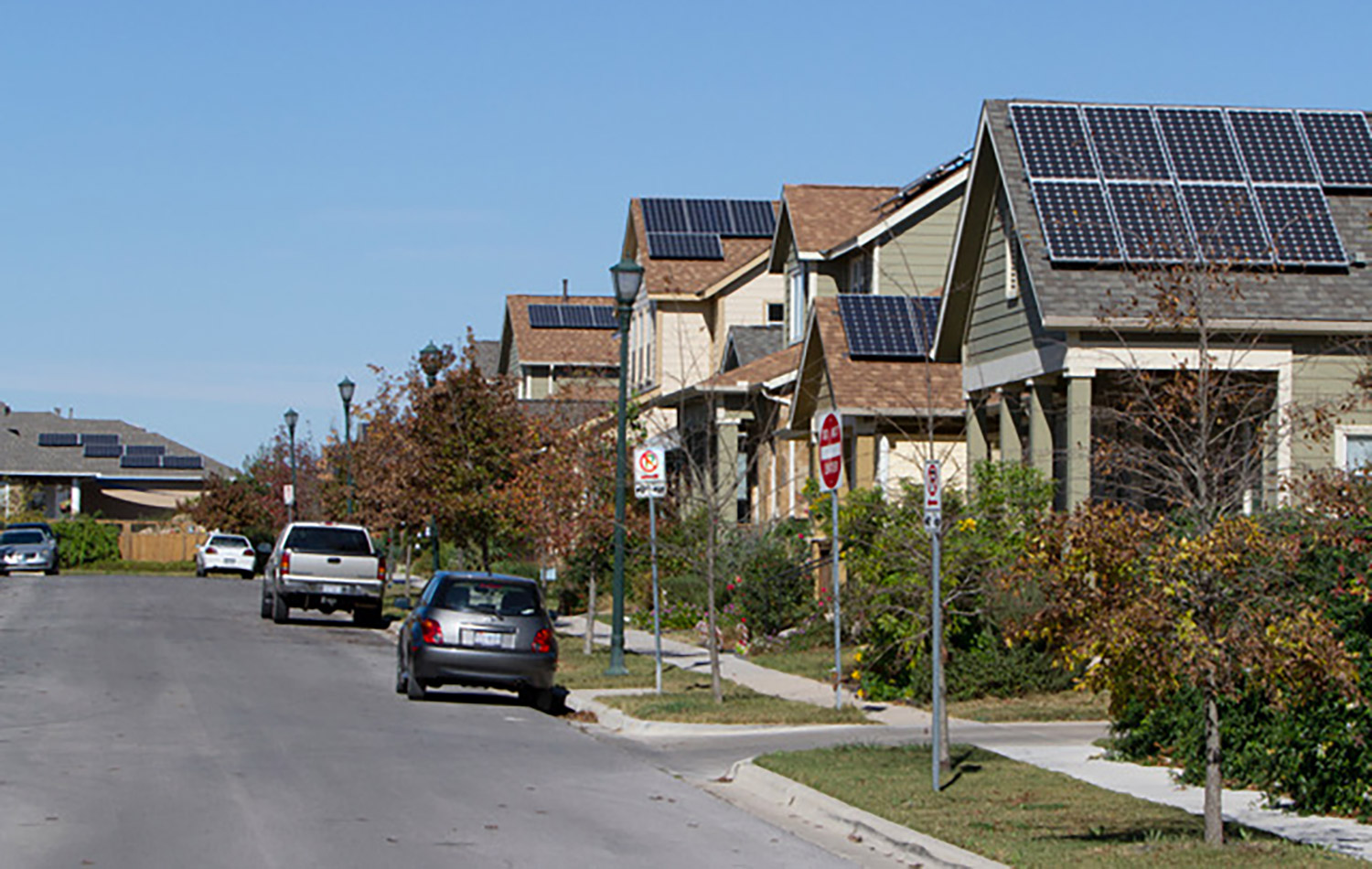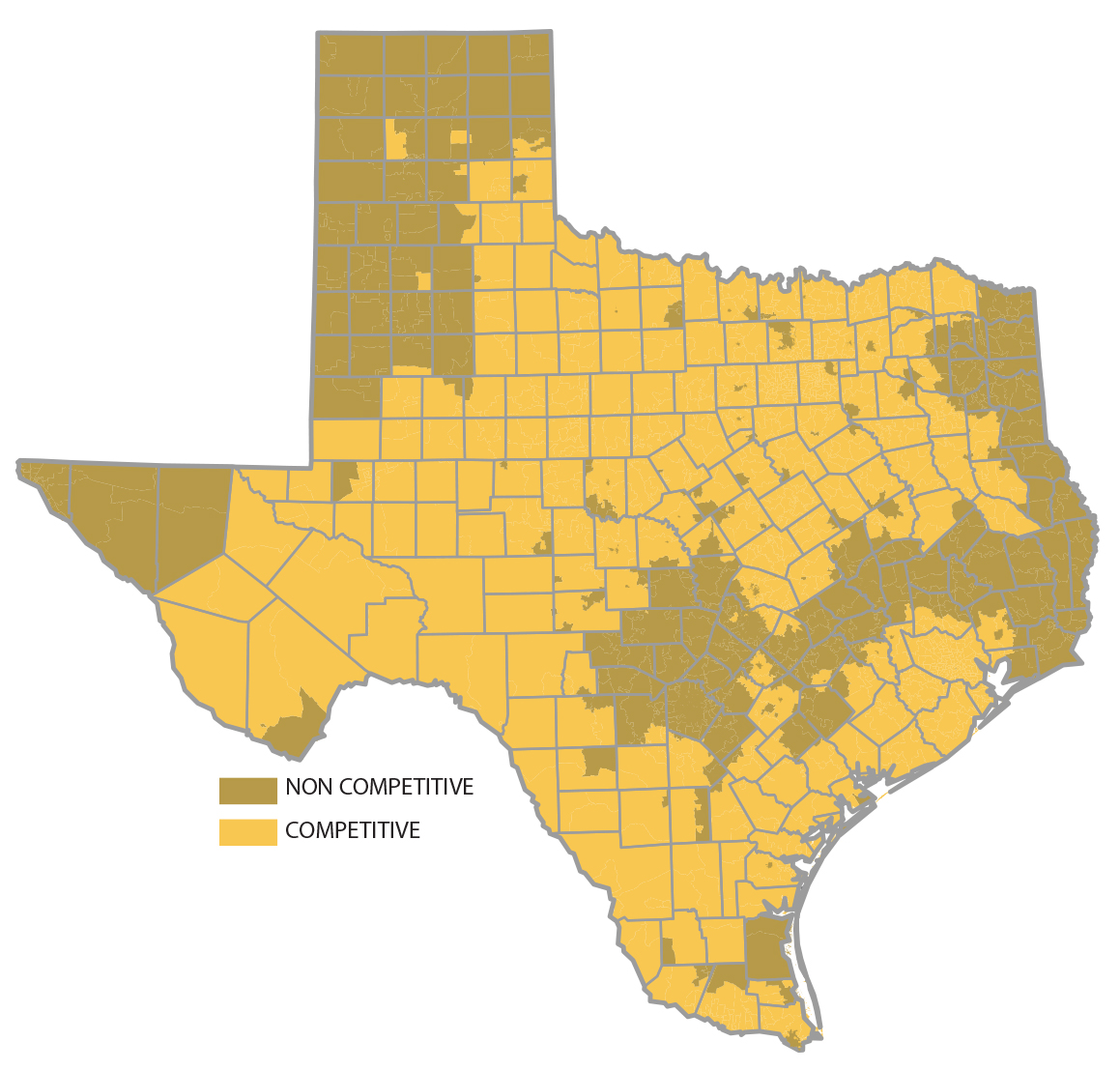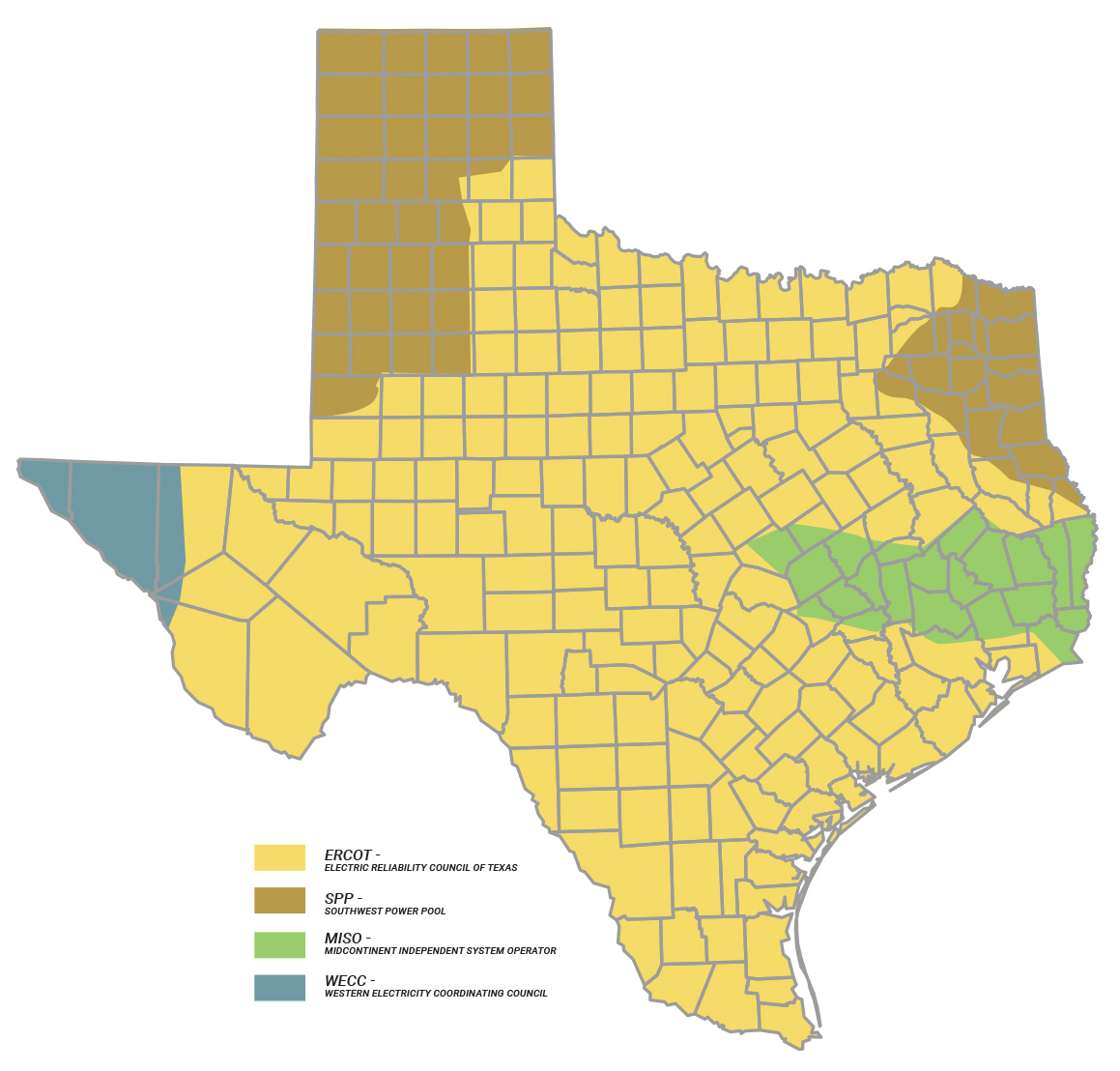
Getting electricity in Texas is more complex than in some states. ERCOT, our "independent grid operator", manages the flow of electric power to 25 million Texans - about 90 percent of the state's electric load, and 80 percent of Texas' land area. But some areas of Texas are not in ERCOT. In West Texas, El Paso and Hudspeth County are served by El Paso Electric within the Western Interconnect, a completely separate grid, while the panhandle in Northwest Texas is divided among two private utilities, several municipal utilities, and a few electric cooperatives that are part of the Southwest Power Pool. Parts of Northeast and Eastern Texas are on an electric grid served by the Southeast Reliability Council (SERC). Each of these grids is managed separately. Thus, while most of the state is in ERCOT territory, Texas is not really one electric grid, but four, each with different rules and separate and distinct energy markets.


For the 90 percent of Texans living within ERCOT territory as well as others living outside of ERCOT, individuals might find themselves in a location served by a public utility owned by their town or city. There are 72 in Texas. Others living in more rural areas might be served by an electric cooperative owned by its members (the customers served by the coop). Areas served by a municipal utility, like Austin Energy or Denton Municipal Electric, or a rural electric cooperative, like Pedernales Electric Cooperative, constitute the "non-competitive" portion of the ERCOT grid. That means that, if you live in any of these service territories, you do not have a choice of where to buy your power except from your one local provider. However, you can advocate to influence what programs and what power sources they procure, through city councils, independent board of directors or elected cooperative boards for example.
Other Texans might live in a city or a rural area where they have a choice of where they buy power through a competitive Retail Electric Provider. Thus about 75% of all electricity sold in ERCOT was at premises that are part of a competitive area. However, the "wires" -- the transmission and distribution system -- is owned by a private investor-owned utility that does not compete with other transmission and distribution companies. Those areas include much of the Dallas-Fort Worth, Corpus Christi and Houston metro areas. While there are a whole bevy of companies -- it can range somewhere between 60 and 80 depending on the year -- offering different electricity plans, in recent years, there has been a consolidation of mergers and acquisitions, and by the end of 2022, reports indicate that retail electric providers owned by energy giants NRG and VISTRA controlled about 70% of all energy consumers in the Texas competitive market. Indeed, the two companies with the most customers -- TXU (owned by Vistra) and Reliant (owned by NRG) are by far the largest in Texas. In addition, a number of well established retail electric providers were devastated by Winter Storm Uri, and at least eight had to declare bankruptcy and are no longer in business, even as new start-ups began. A recent query on the state’s Power to Choose website, only found about 45 individual companies offering service in the Houston area. Thus, who you get your electricity from depends upon whether you live inside or outside of ERCOT's boundaries, and whether you are in the service territory of a municipally-owned utility, electric cooperative, or an investor-owned utility where you can choose which provider sells you electricity.



